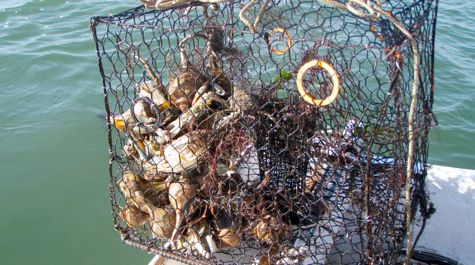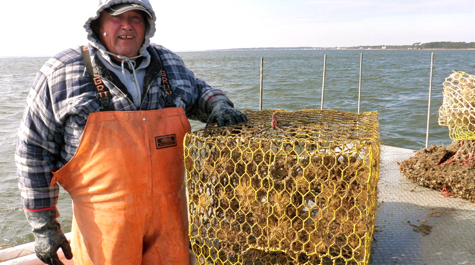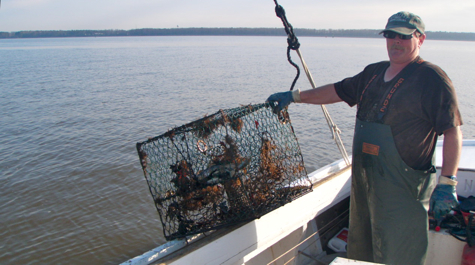Ghost pot program a "win-win"
Thousands of old crab pots pulled from the Bay are a danger to wildlife
Out-of-work commercial watermen pulled up more than 9,000 derelict so-called "ghost pots" from Chesapeake Bay and its tributaries this winter, and scoured shallow waters in the second year of Virginia's landmark Marine Debris Removal Program.
The program, funded by the Virginia Marine Resources Commission and implemented by the Virginia Institute of Marine Science, paid the watermen to use side-imaging sonar units to detect and retrieve abandoned crab pots and other marine debris that litter the bay floor. This targeted-retrieval method minimizes disturbance to the bottom.
The 66 watermen participants were paid $300 a day and compensated for their fuel costs. Many were equipped for the first time to search shallow waters, which proved to be a successful expansion of the program.
Scientists at the Virginia Institute of Marine Science, who set up the program and supervised the participating watermen, have analyzed the program's accomplishments in its second year and discovered:
- The watermen recovered more than 9,000 crab pots, along with 113 eel pots, 31 abandoned nets, and 535 pieces of other debris, including anchors, some old waders and even a plastic deck chair.
- Many of the recovered pots had been derelict for several years, and continue to inadvertently trap and kill crabs and a variety of fish and wildlife.
- The recovered crab pots were found to have captured over the winter more than 9,800 animals, including crabs, turtles, fish, eels, and ducks. Scientists have determined that each functional lost crab pot can capture about 50 crabs a year.
- The 66 watermen who participated in the program covered about 625 square miles, roughly 400,000 acres.
"The watermen continue to amaze us with the amount of material they recover and their enthusiasm. It is a real pleasure to work with them," said VIMS project leader Dr. Kirk Havens.
Ongoing research at VIMS funded through NOAA's Marine Debris Program suggests 20 percent of all the crab pots set in a year are lost, primarily due to storms or boat propellers that accidentally cut the pots free from their buoys.
This is the largest program of its kind in the country. It is scheduled to continue next year.
"This is a proverbial win-win for everyone," said VMRC Commissioner Steven G. Bowman. "The Bay is cleaner. The scientists improved our knowledge base. And these watermen had jobs for the winter, which is especially beneficial in these difficult economic times. I'm very pleased with the program's success."
The program costs roughly $1 million a year, provided by the VMRC using federal blue crab disaster funds appropriated by the U.S. Department of Commerce in 2009. VIMS handled the daily operation and supervision of the participating watermen. The program ran from December through March 15.
All the recovered marine debris was GPS-located, photographed, and participant boat tracks recorded. All marine debris was disposed of in a safe and environmentally conscious manner or recycled.
Waste Management, based in Houston, Texas, plans to provide strategically placed recycling containers for next year, allowing quick collection, transfer, and recycling of the recovered marine debris. Waste Management is the largest residential recycler and a leading developer, operator and owner of waste-to-energy facilities in the United States.
Since the Marine Debris Removal Program began in December 2008, more than 18,000 derelict crab pots have been recovered (8,600 from the 2008-2009 program) from Virginia waters.
For more information on the program results, call Dr. Kirk Havens at (804) 684-7386 or visit http://ccrm.vims.edu/marine_debris_removal/index.html.



